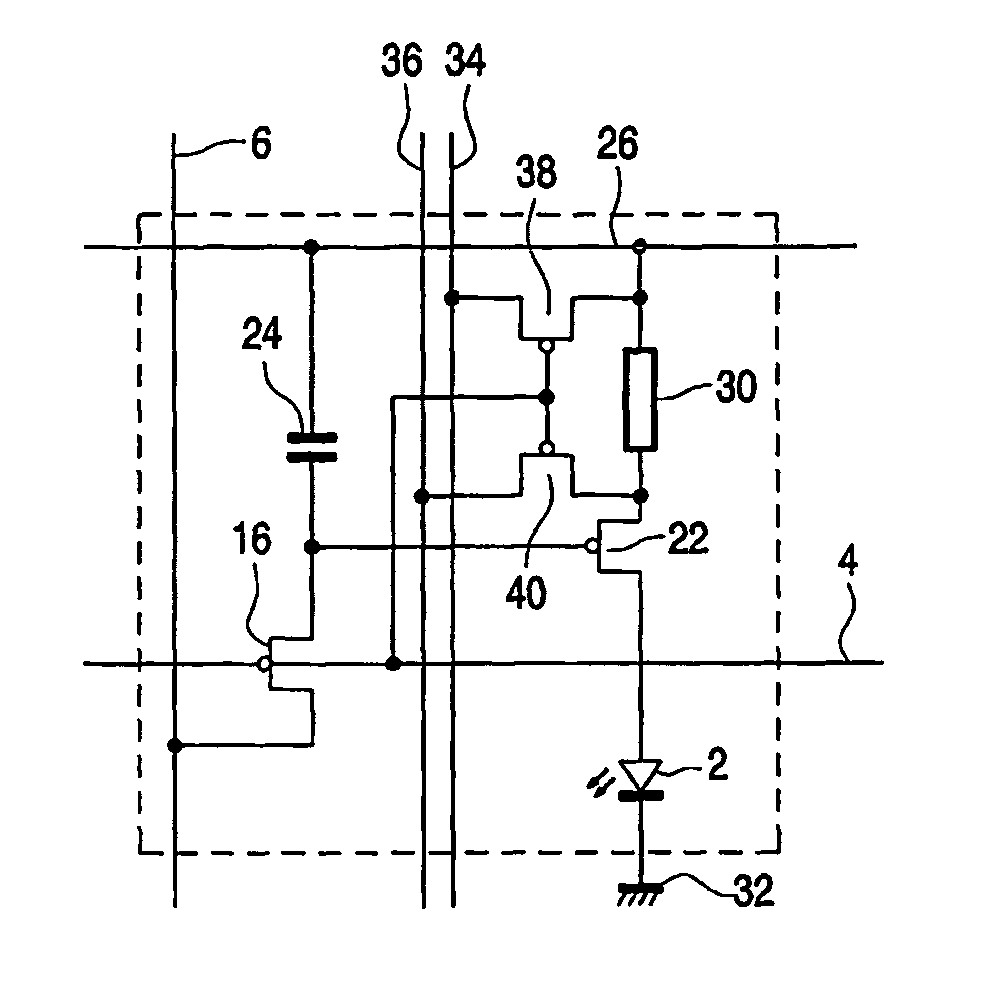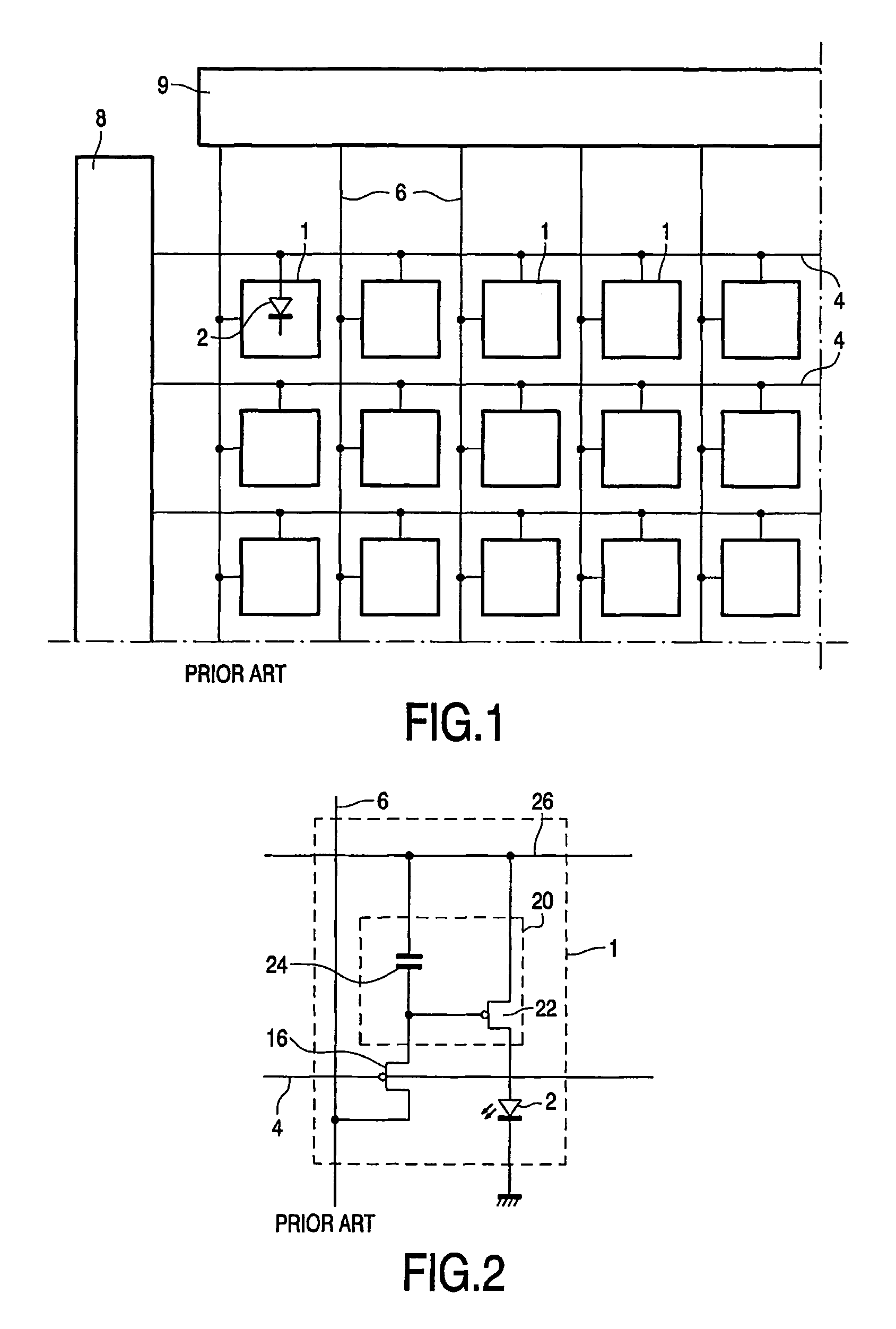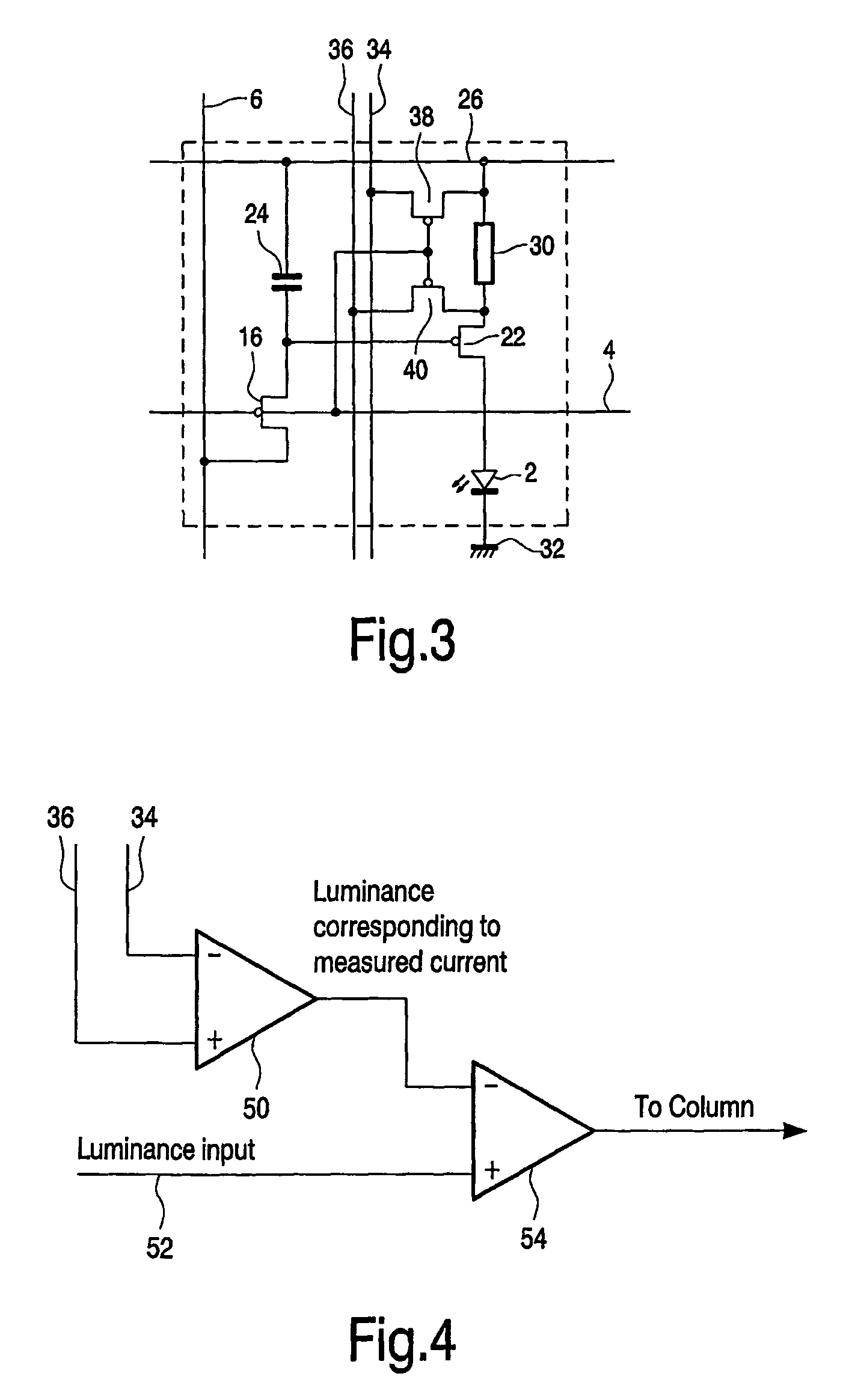Electroluminescent display devices
a display device and electroluminescent technology, applied in the field of electroluminescent display devices, can solve the problems of difficult data correction techniques, affecting the brightness of the display, and not being able to place this preferred cathode material against the active matrix circuitry,
- Summary
- Abstract
- Description
- Claims
- Application Information
AI Technical Summary
Benefits of technology
Problems solved by technology
Method used
Image
Examples
Embodiment Construction
[0052]The invention provides an active matrix electroluminescent display device in which a current sampling resistor is provided within each pixel in the main current path of the display element. This enables a feedback signal derived from the current through the resistor (and therefore the display element) to be used to control the pixel drive.
[0053]The same reference numerals are used in different figures for the same components, and description of these components will not be repeated.
[0054]FIG. 3 shows a first pixel arrangement in accordance with the invention. As in the conventional pixel of FIG. 2, the pixel is voltage-addressed, and a storage capacitor 24 holds the voltage on the gate of the drive transistor 22 after the pixel addressing phase.
[0055]A current sampling resistor 30 is placed in series with the drive transistor 22 and the display element 2, so that they are all arranged in series between the power supply line 26 and the ground terminal 32. The voltage at each en...
PUM
 Login to View More
Login to View More Abstract
Description
Claims
Application Information
 Login to View More
Login to View More - R&D
- Intellectual Property
- Life Sciences
- Materials
- Tech Scout
- Unparalleled Data Quality
- Higher Quality Content
- 60% Fewer Hallucinations
Browse by: Latest US Patents, China's latest patents, Technical Efficacy Thesaurus, Application Domain, Technology Topic, Popular Technical Reports.
© 2025 PatSnap. All rights reserved.Legal|Privacy policy|Modern Slavery Act Transparency Statement|Sitemap|About US| Contact US: help@patsnap.com



